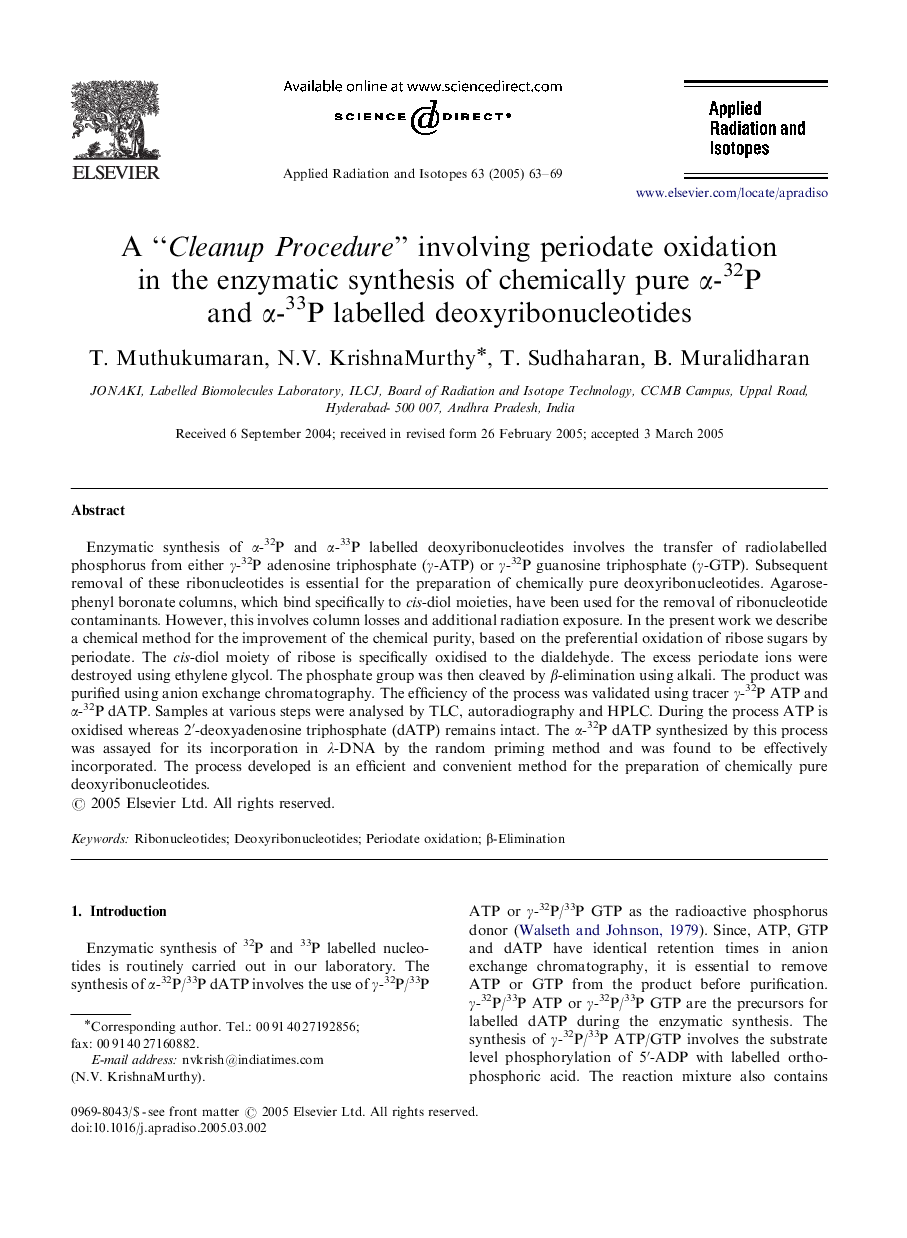| Article ID | Journal | Published Year | Pages | File Type |
|---|---|---|---|---|
| 10730549 | Applied Radiation and Isotopes | 2005 | 7 Pages |
Abstract
Enzymatic synthesis of α-32P and α-33P labelled deoxyribonucleotides involves the transfer of radiolabelled phosphorus from either γ-32P adenosine triphosphate (γ-ATP) or γ-32P guanosine triphosphate (γ-GTP). Subsequent removal of these ribonucleotides is essential for the preparation of chemically pure deoxyribonucleotides. Agarose-phenyl boronate columns, which bind specifically to cis-diol moieties, have been used for the removal of ribonucleotide contaminants. However, this involves column losses and additional radiation exposure. In the present work we describe a chemical method for the improvement of the chemical purity, based on the preferential oxidation of ribose sugars by periodate. The cis-diol moiety of ribose is specifically oxidised to the dialdehyde. The excess periodate ions were destroyed using ethylene glycol. The phosphate group was then cleaved by β-elimination using alkali. The product was purified using anion exchange chromatography. The efficiency of the process was validated using tracer γ-32P ATP and α-32P dATP. Samples at various steps were analysed by TLC, autoradiography and HPLC. During the process ATP is oxidised whereas 2â²-deoxyadenosine triphosphate (dATP) remains intact. The α-32P dATP synthesized by this process was assayed for its incorporation in λ-DNA by the random priming method and was found to be effectively incorporated. The process developed is an efficient and convenient method for the preparation of chemically pure deoxyribonucleotides.
Related Topics
Physical Sciences and Engineering
Physics and Astronomy
Radiation
Authors
T. Muthukumaran, N.V. KrishnaMurthy, T. Sudhaharan, B. Muralidharan,
